One of the best things about running is that you can do it anywhere.
It does not require expensive equipment or fancy gym machinery to run. The only thing you may need to invest in are some good running shoes.
When we make the trip to a running store or look online at what shoes we want, one of the first things we tend to look at before purchasing a new pair is the wear pattern exhibited on the soles of the trainers we are replacing.
Wear pattern can provide a glimpse of how we run but misinterpretation of these patterns may lead us down a road of inappropriate shoe selection and running form modification that could potentially reduce performance and increase risk of injury.
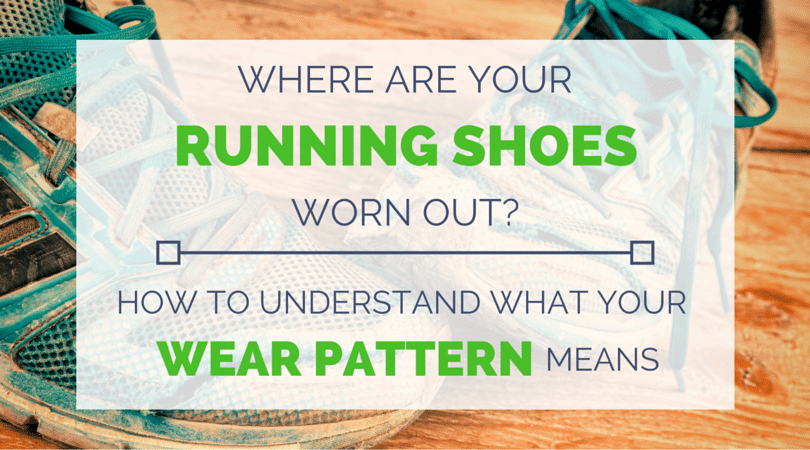
Where Is It Normal To Have Wear on Running Shoes?
It is always dangerous to use the word ‘normal’ when referring to running performance and injury prevention.
What may be a healthy, robust, efficient way of moving for one runner could be a source of inefficiency and/or injury for another.
As a result, generalizations and myths evolve with regard to what we should and shouldn’t expect to see when looking at the wear on the sole of an old pair of running shoes.
Wear on the heel is a good example of this:
For many runners, heel striking is still seen as a sign of inefficiency, despite what the research shows us.
Check this out:
A study by Dr. Pete Larson of Runblogger.com at the 2009 Manchester City Marathon revealed that at the 10km (6.2 miles) point, 88.9% of the 936 runners he filmed were heel striking.
Only 3.4% of these runners were landing on midfoot and 1.8% on forefoot!
We discussed why heel striking is incorrectly associated with inefficiency but suffice to say that if landing on your heel during a marathon is as ‘normal’ as this research shows, we should expect for many distance runners a certain amount of wear on the heels of their shoes.
The Three Phases of Foot Strike
Seeing wear on the outside of the shoe (heel or the forefoot) is also regarded by many as a bad sign.
And yet, landing on the outside of the foot is part of the ingenious way in which our feet and body naturally work to propel ourselves forwards.
From the moment the foot lands in front of us (initial contact) to the moment it leaves the ground behind us (toe off), the foot goes through specific movement changes that allow the absorption of ground forces to be converted into propulsion.
Most runners have heard of them already: supination and pronation.
Initial Contact
As the foot prepares for initial contact on the ground in front of us, it naturally tilts inwards (supinates).
This is part of preparing for the impact of landing, and as a result the outer (lateral) edge of the sole comes into contact with the ground before the inner (medial) edge.
Mid-Stance
Once the foot has made initial contact on the outside edge, it begins to distribute and absorb the ground force by tilting outwards, meaning the inner (medial) edge of the foot lowers towards the ground.
This process is known as pronation, and is again a natural movement.
Yes, you did read that right, despite what your running friend told you about pronating being bad!
This continues to midstance at which the maximum amount of body weight is being supported by the stabilizing leg.
It also the point when the hip, knee and ankle are at their most bent (flexed).
Toe Off
Once you pass mid stance; your hip, knee, and ankle start to straighten to help drive your stabilizing leg back underneath your body.
In doing so, the foot starts to supinate again, with the arch lifting away from the floor in order to provide a solid base on which to push off.
The last point of contact is generally the 2nd and 3rd toes. Wear on the sole here may have implications which we will consider shortly.
This is important:
Hopefully you can now see that labelling a runner as a ‘supinator’ or a ‘pronator’ is meaningless.
We need both of these to move!
Supination and pronation are natural movements that we should not try to think about or force whilst running.
The degree to which each occur will also differ from one runner to another in accordance with natural human variance, as we discussed in our Impact of Footwear and Foot Type on Injury Prevention post.
As humans, we are all built slightly differently, and must therefore expect to move slightly differently.
If we cannot establish the existence of a ‘normal’ it thus makes it tricky to label anyone as an ‘underpronator’ or an ‘overpronator’.
Therefore, landing on the outside of the heel is perfectly common.
Yes, if your old pair of trainers are worn on the lateral heel, they may well tilt inwards when you place them on the floor – but this does not necessarily mean you are an ‘underpronator’ or ‘oversupinator’.
How Much Wear Is Normal on Running Shoes?
A problem also arises when we try and decide how much wear is normal.
This is where use of full body gait analysis can be highly advantageous, as opposed to the Running Store Analysis, that May Not Help You Find the Correct Shoe.
By looking higher up the body, we can see if there is any other reason a runner may be landing particularly heavy on a certain part of their shoe.
For example, a natural ‘bow’ in the long tibia shin bone (known as ‘genus varum’) will cause a foot to land more on the outer edge of the shoe.
Inappropriate trainers can also cause excessive wear on the outside of the shoe.
As we saw in the link above, the ‘overpronation’ model of running shoe recommendation is seriously flawed, meaning that some runners are sold shoes designed to provide extra support on the inside of the shoe (higher density foam in the midsole), that may not actually be required.
This extra support under the inner arch of the foot could cause the foot to land on the outside which would again show up as excessive lateral wear.
Signs of wear on the inner sole are far less common than the outer sole.
Inner wear would suggest that the foot is landing in a pronated state (tilted outwards), but would again require a full body gait analysis to see why this is so, paying particular attention to what is happening at the pelvis and hips.
This would also be the case for excessive wear under the base of the big toe, indicative of a ‘twisting’ motion at toe off, as if you were putting out a cigarette (not that any of you smoke of course).
If the hip is unable to rotate sufficiently at this point in gait cycle, the movement is achieved by the foot twisting instead, typically to the outside.
This in time can lead to a circular type wear pattern under the base of the big toe.
What If Only One Shoe Has Excessive Wear?
Just as it is natural for runners to show variance in degree of pronation and supination, it is also typical for one leg to be slightly longer than the other.
Symmetry is remarkably uncommon in nature with some research suggesting that for most people anatomic leg-length inequality does not appear to be clinically significant until the magnitude reaches around 20mm.
If just one of your shoes is showing excessive wear along with an ongoing issue of injury and/or pain, it is worth having a full body gait analysis to see whether a significant structural leg length difference is the cause of inefficient mechanics at hip level.
It should also be mentioned that shoes do not always come from the factory identical, and relatively tiny changes in shoe structure can make a big difference to the way in which your feet land.
This is why it is so important to break new shoes in gently, even if they are exactly the same model as your old shoes.
Rotate them with your old shoes by starting with just a few miles in the new pair, listening to your body as you give it a chance to adjust to any potential differences.
If after a few test runs one shoe feels different, or even if both shoes feel different to the last pair, do not be afraid to take them back and ask for a replacement pair.
RunnersConnect Bonus
Download your FREE lacing techniques guide.
You know how to read the wear of shoes, but are you lacing your shoes wrong? Download our Running Shoe Lacing guide for free and get a quick reminder, specific how-to and resources for videos on the best way to lace your running shoes.
What Do I Need to Pay Attention to When it Comes to Wear Patterns on my Running Shoes?
There are many reasons your shoes may exhibit the wear that they do.
It is important not to jump to any conclusions without having a full body video gait analysis.
It may be that the shoes you are wearing are not suitable for you; it could be that your running form requires modifying.
But it could also be that the wear you see is to be expected given your unique physical makeup, and has nothing at all to do with a particular injury or pain you have been suffering.
As is so often the case when it comes to running analysis, wear patterns are just one piece of the large jigsaw to help you become a faster, more resilient runner.
Success comes in being able to put the jigsaw together correctly and not focusing too much on just one part.
Happy Running!
Matt Phillips is a Running Injury Specialist & Video Gait Analyst at StrideUK & Studio57clinic. Follow Matt on Twitter: @sportinjurymatt

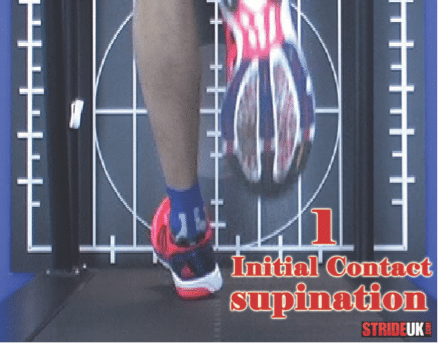
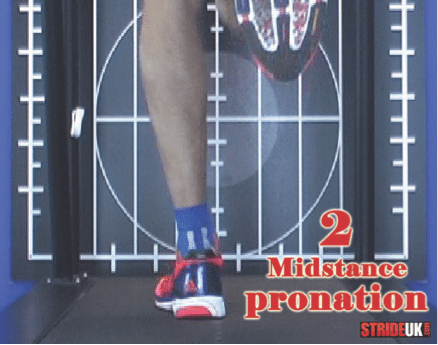
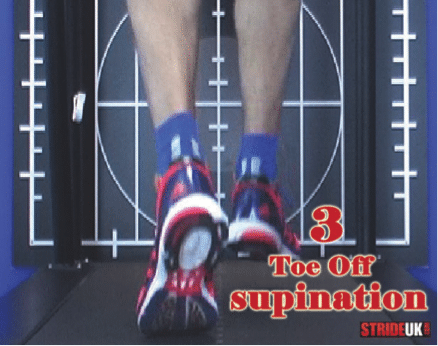



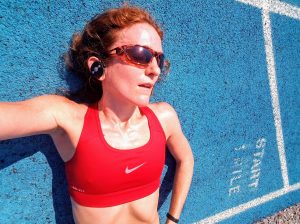

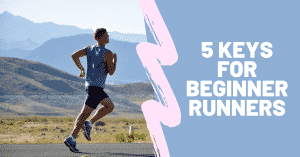

2 Responses
“But it could also be that the wear you see is to be expected given your unique physical makeup, and has nothing at all to do with a particular injury or pain you have been suffering.”
Good reminder for many people. Shoes wear out, regardless of your form. If you have great technique, poor technique, an injury, or you’ve not been injured in years. If you wear a shoe for 300-1300 miles, they will wear out. Just like pronation, this is normal 🙂
Thanks for the feedback Kyle, glad to see you realize the importance of that point. When your shoes begin to wear, thats the time to start looking for a new pair…which is where you come in! 🙂